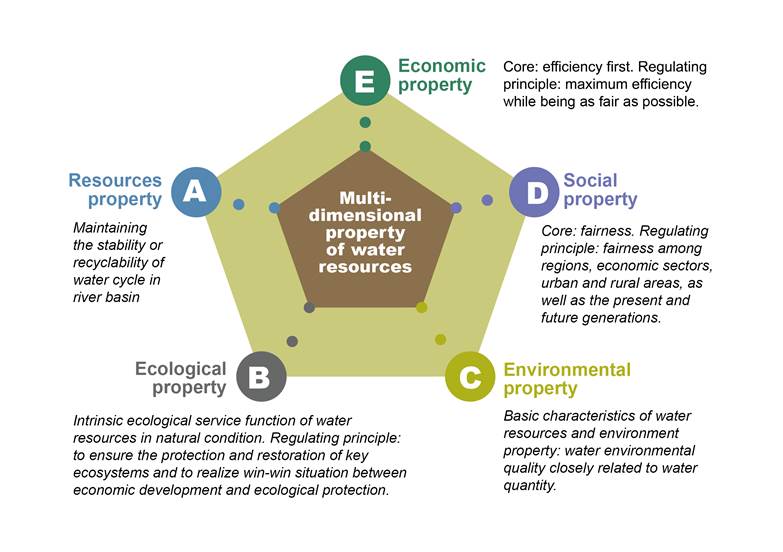By the research team led by WANG Hao
Keywords: natural water cycle, artificial water cycle, natural-artificial dualistic water cycle
I. Theoretical system
Natural water cycle: The natural hydrological cycle unaffected by human activities and consisting of atmospheric, overland, soil and underground processes.
Artificial water cycle: The hydrological cycle created in the social and economic activities, including water withdrawal, diversion, utilization, drain, treatment and recycling. Urban and rural areas are the two fundamental units.
Natural-artificial dualistic water cycle: The real pattern of hydrological cycle affected by human activities. All river basins with human activities show the characteristics of compound dualistic water cycle.
The heterogeneous characteristics of dualistic water cycle: Due to the influence of human activities, heterogeneous variations occur in all fundamental links of the water cycle, changing the presumption of hydrological homogeneity.
Key scientific issues: 1) multi-process coupling feedback mechanism of natural-artificial water cycle, 2) evolution mechanism and pattern of dualistic water cycle and water resources, and 3) quantity-quality-efficiency transformation mechanism of water resources based on the whole process of water cycle.
Major research contents: 1) interaction and structural coupling of natural-artificial water cycle, 2) multi-process and multi-scale tempo-spatial coupling of dualistic water cycle, 3) evolution pattern of river basin water cycle in changing environment, 4) evolution pattern of river basin water environment in changing environment, 5) evolution pattern of river basin water ecology in changing environment, 6) dynamic assessment of water resources in changing environment, 7) forecasting of future water cycle and uncertainty analysis, and 8) multi-dimensional critical regulation plan of river basin water cycle.
II. Methodological system
1) Based on the dynamic paradigm of natural-artificial dualistic water cycle, the comprehensive simulation model of dualistic water cycle in river basin and the associative processes (NADUWA3E) is developed. Through scaling and coupling integration, the comprehensive coupling simulation is realized of the three major systems (water cycle, water environment, and water ecology) of dualistic water cycle in river basin and the associative processes.
2) Comprehensive assessment methods, as well as the mechanism and standards, of full-aperture multi-dimensional efficient water resources utilization are proposed based on the “quantity-quality-efficiency” of water cycle.
3) Comprehensive multi-dimensional water cycle regulation model system is established for river basins with intensive human activities and inadequate water resources.

III. Application
1) Based on the dualistic water cycle model, simulation and forecasting is conducted for the past, current and future water cycles of Haihe River Basin, quantitatively revealing the six rules of water resources evolution in the river basin and the changing patterns of the associative processes of water cycle. The attribution analysis is also conducted.
2) In 2013, International Hydrologic Decade (IHD) decided that the changing “natural-artificial” water cycle be the only direction of development for the next ten years.
3) Dualistic water cycle theory, as well as the quantitative tools, has provided decision-making support for the implementation of the most stringent water resources management in China, the building of water ecological civilization, and the development of sponge river basins (cities).
4) The research has won the first grade of China’s National Science and Technology Progress Award in 2014.










